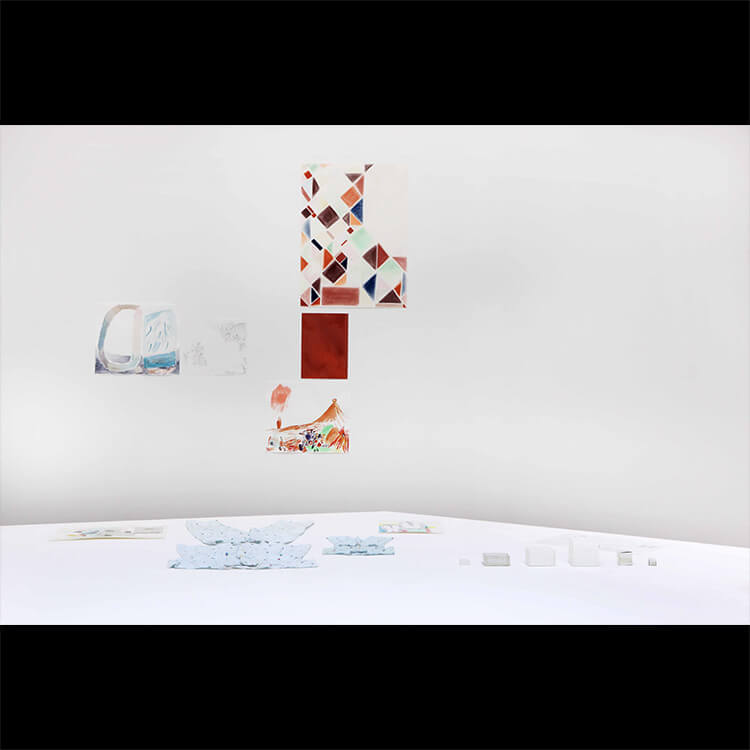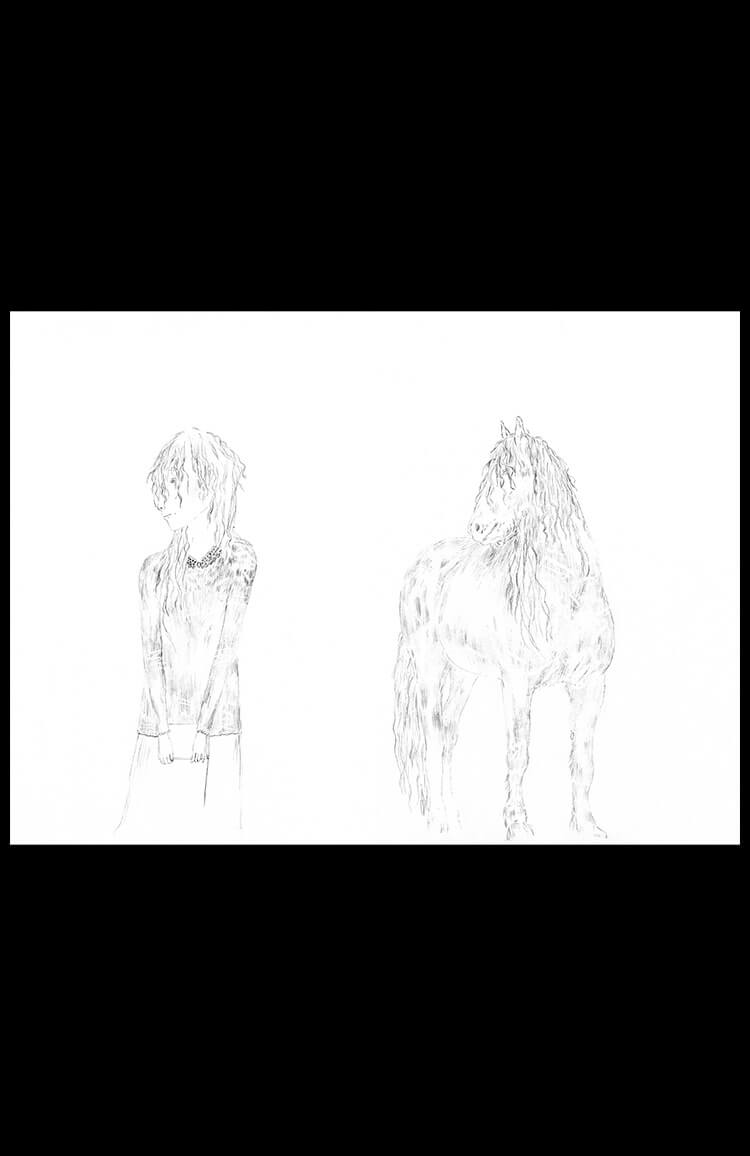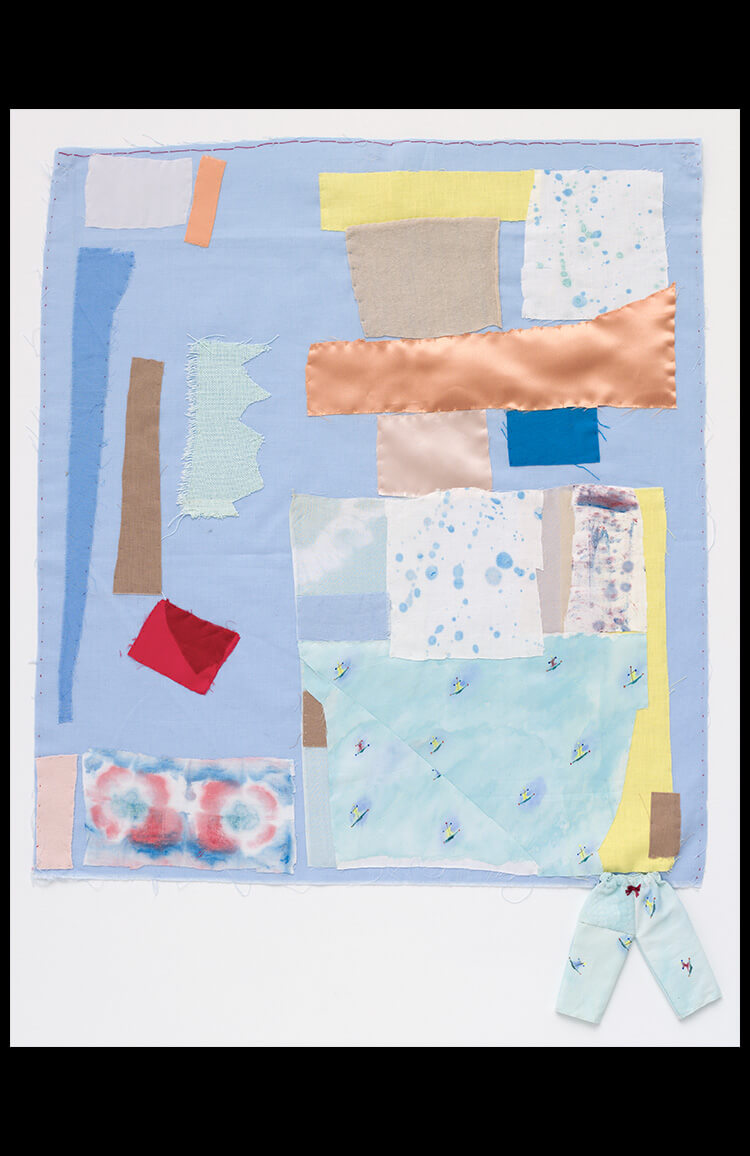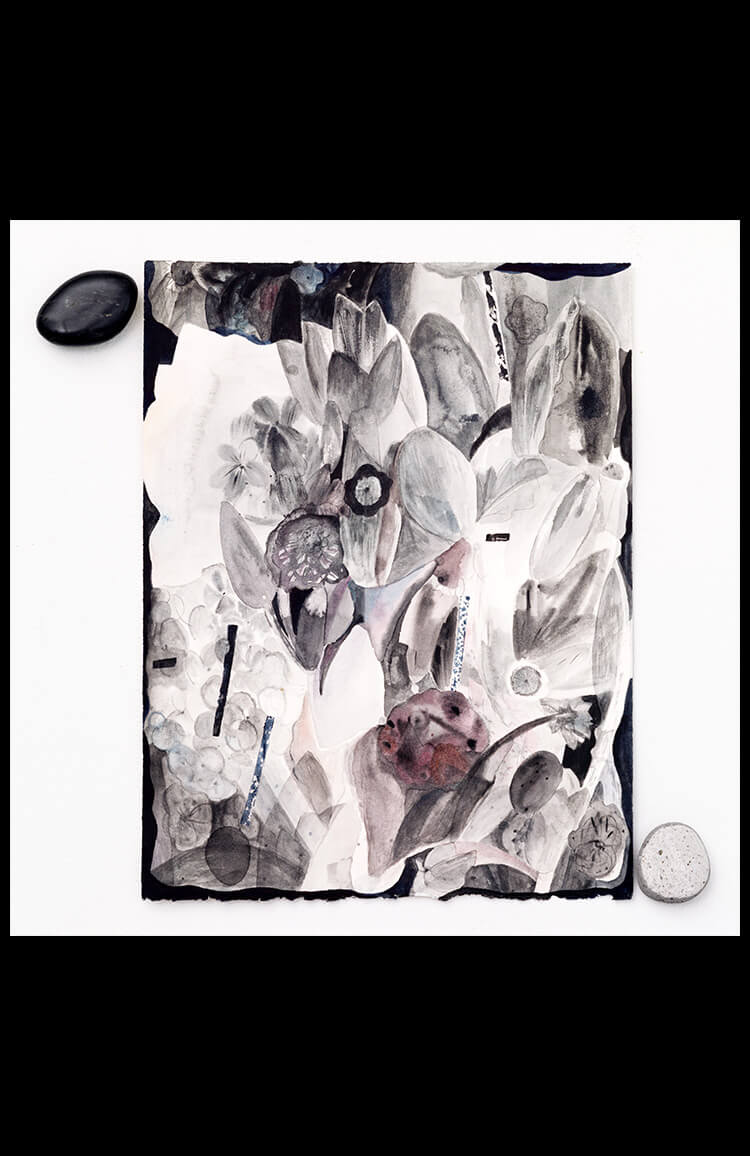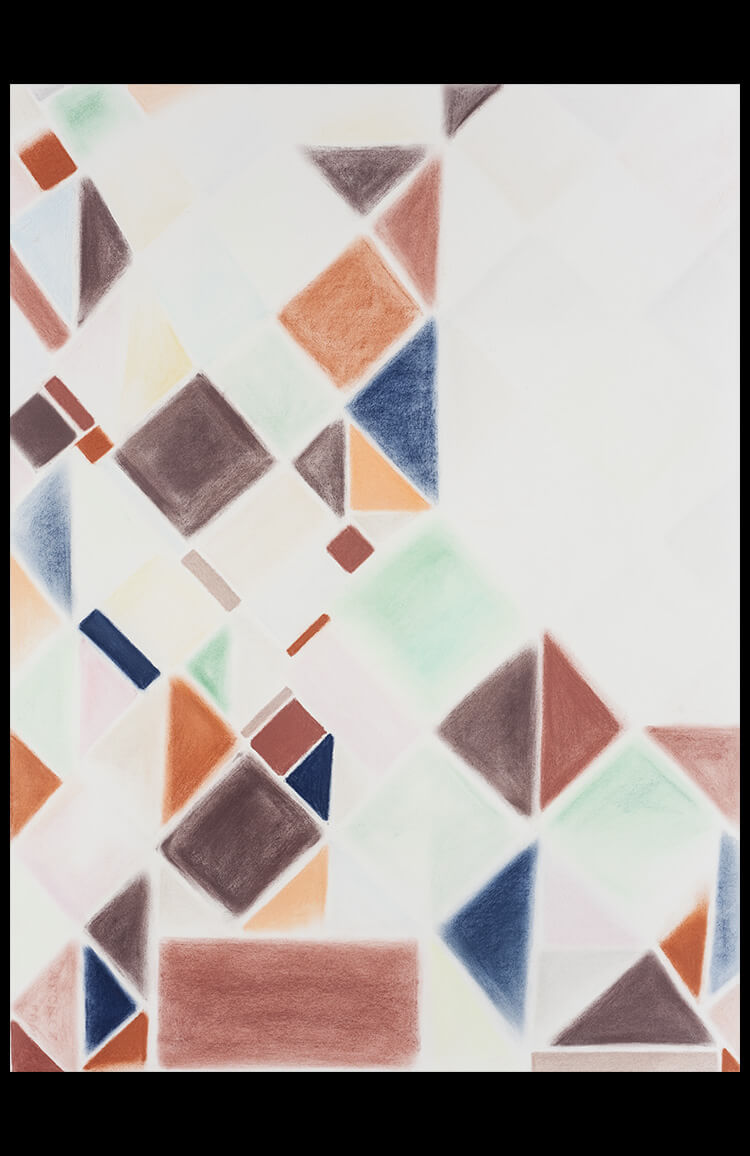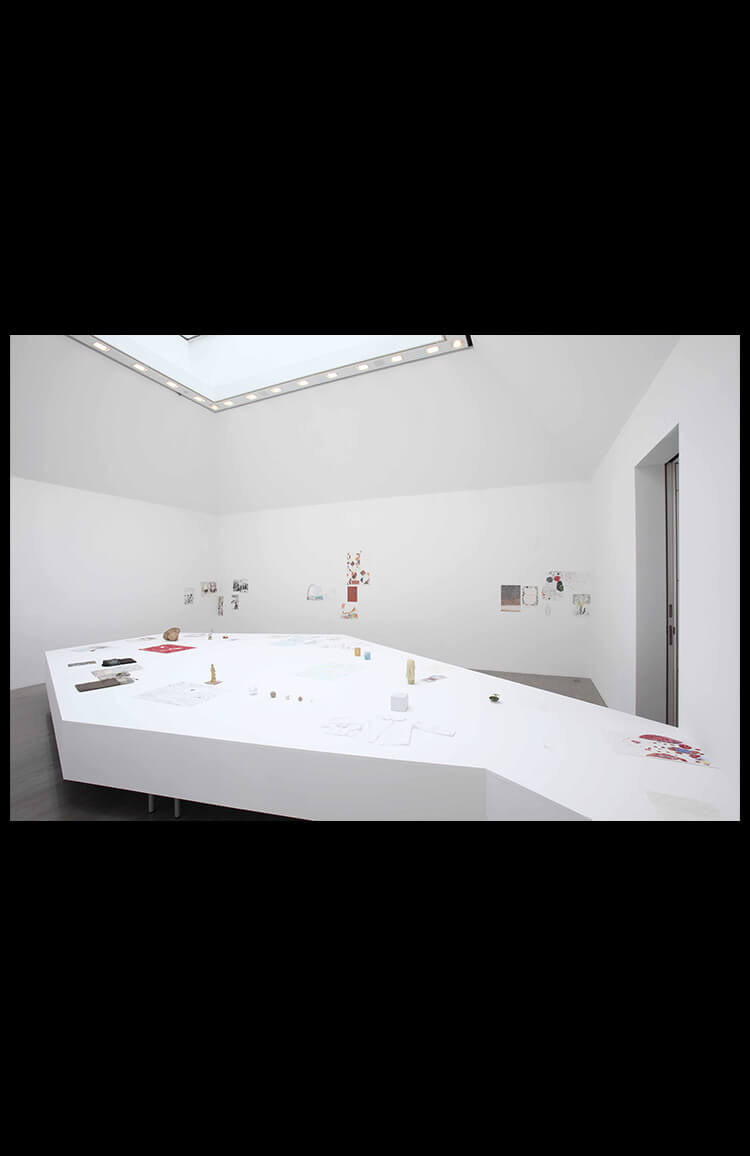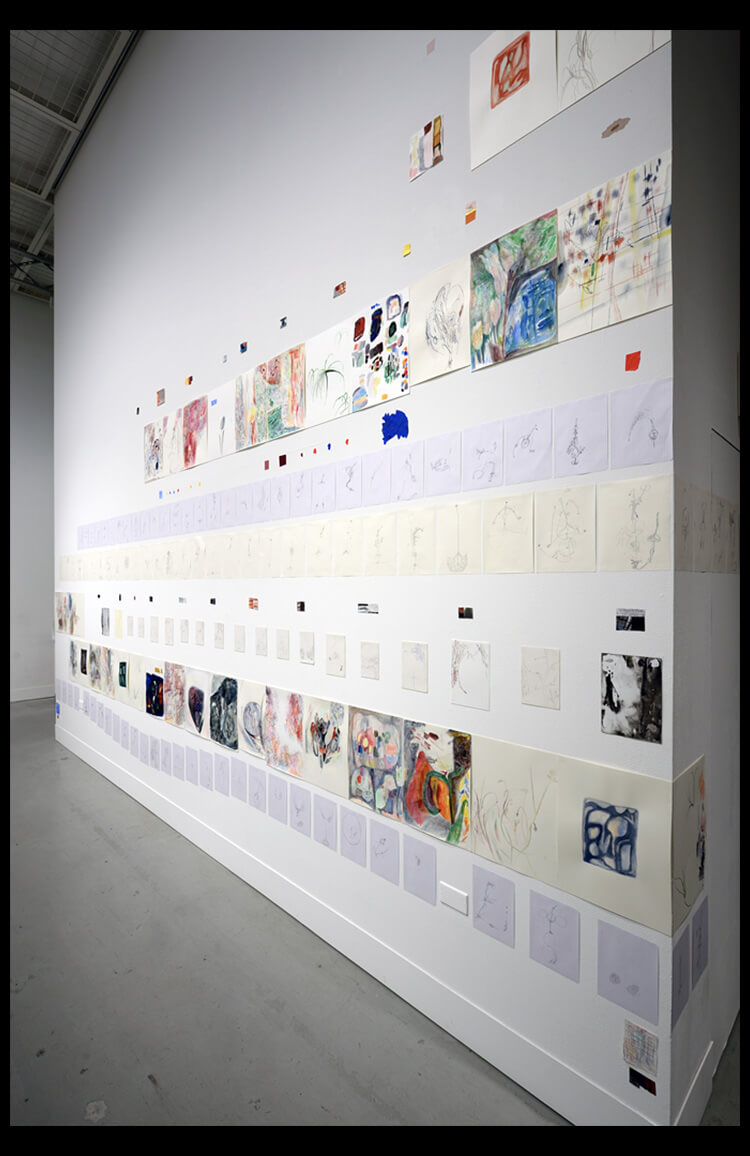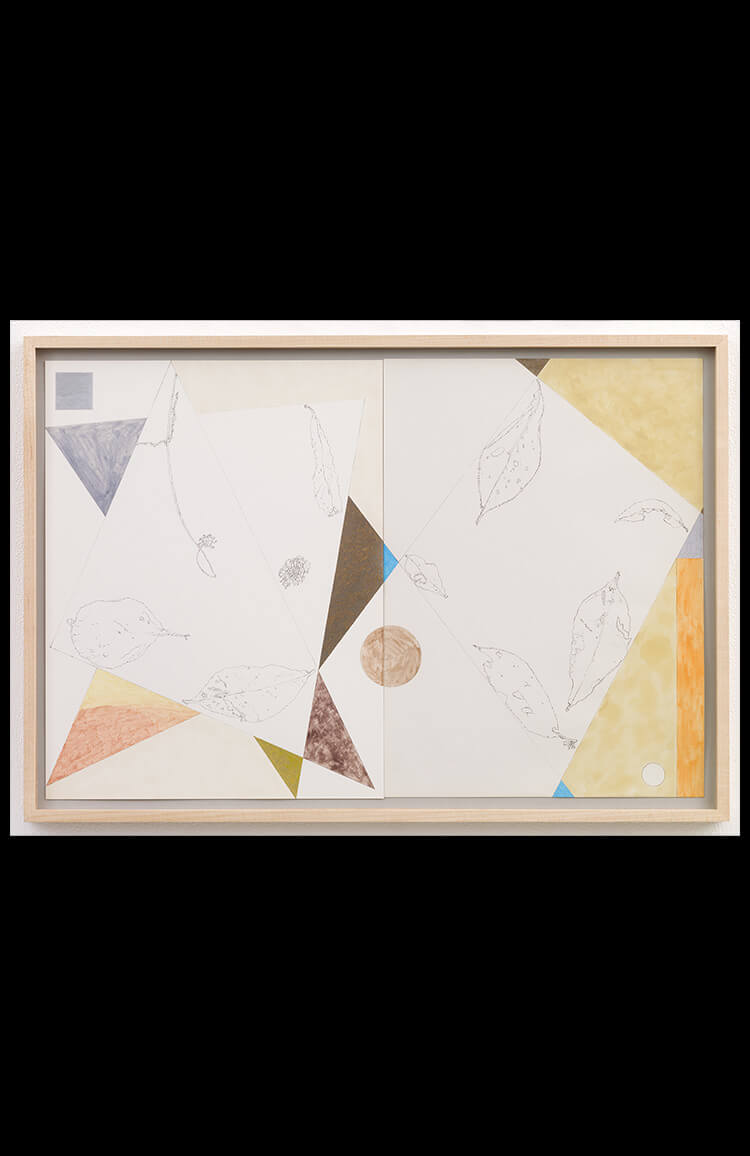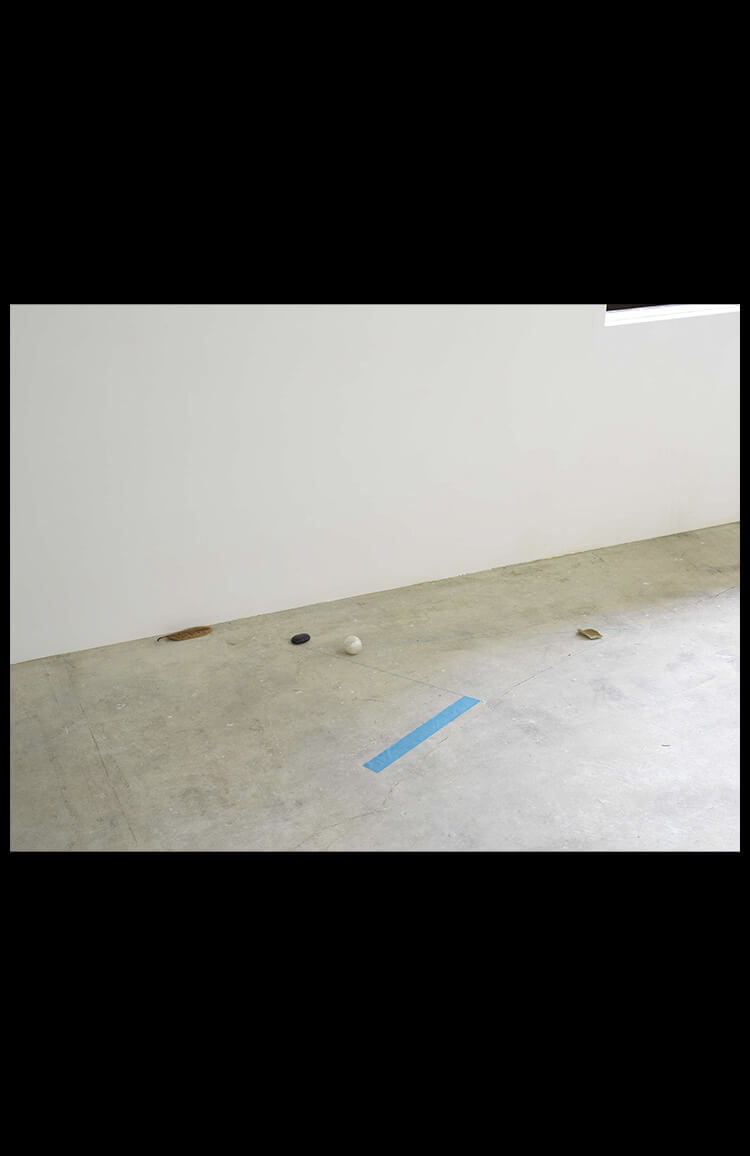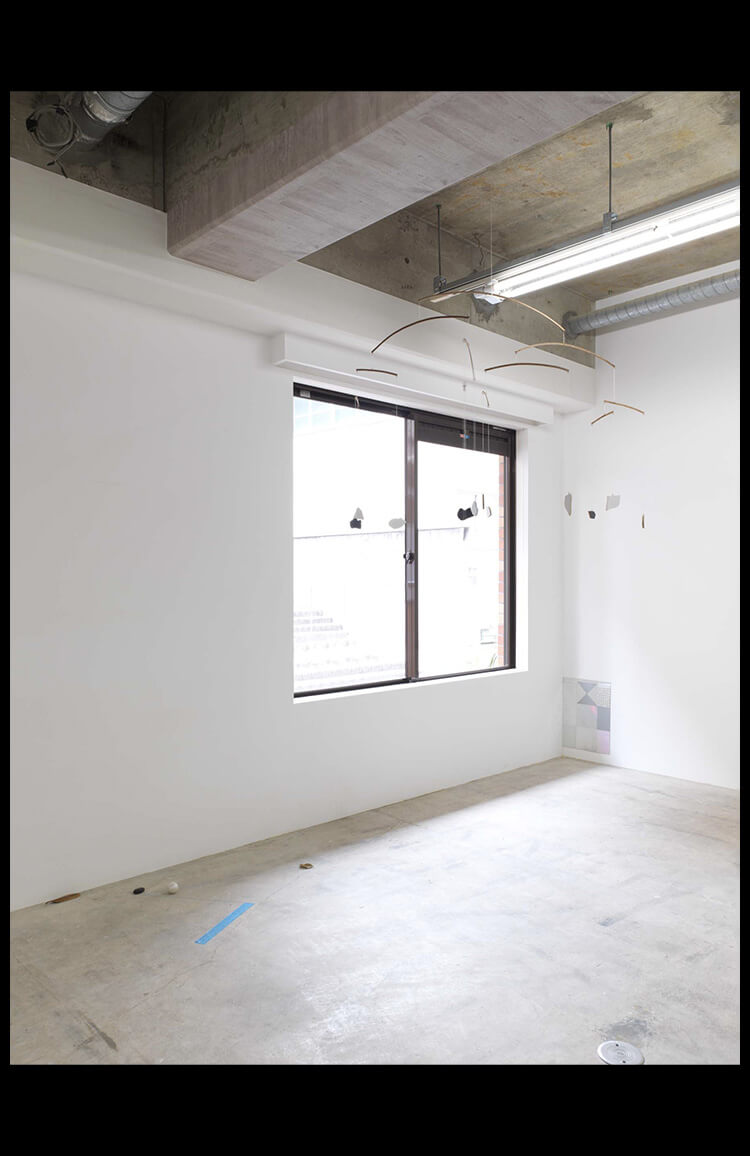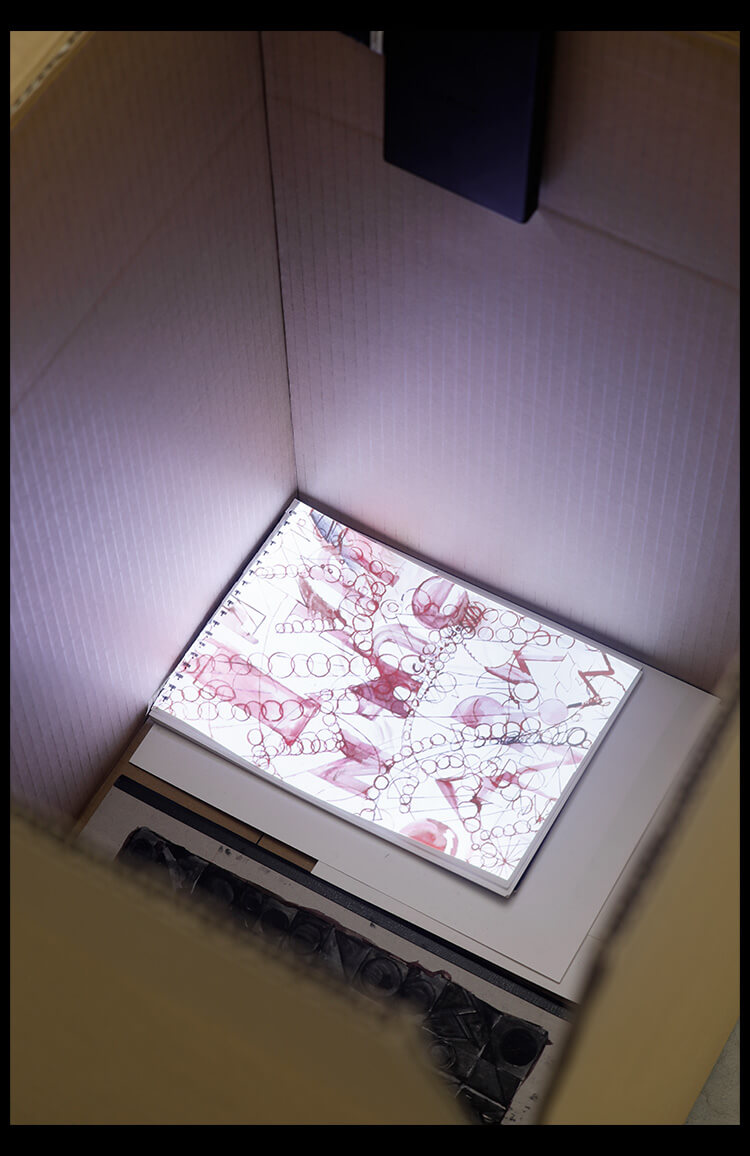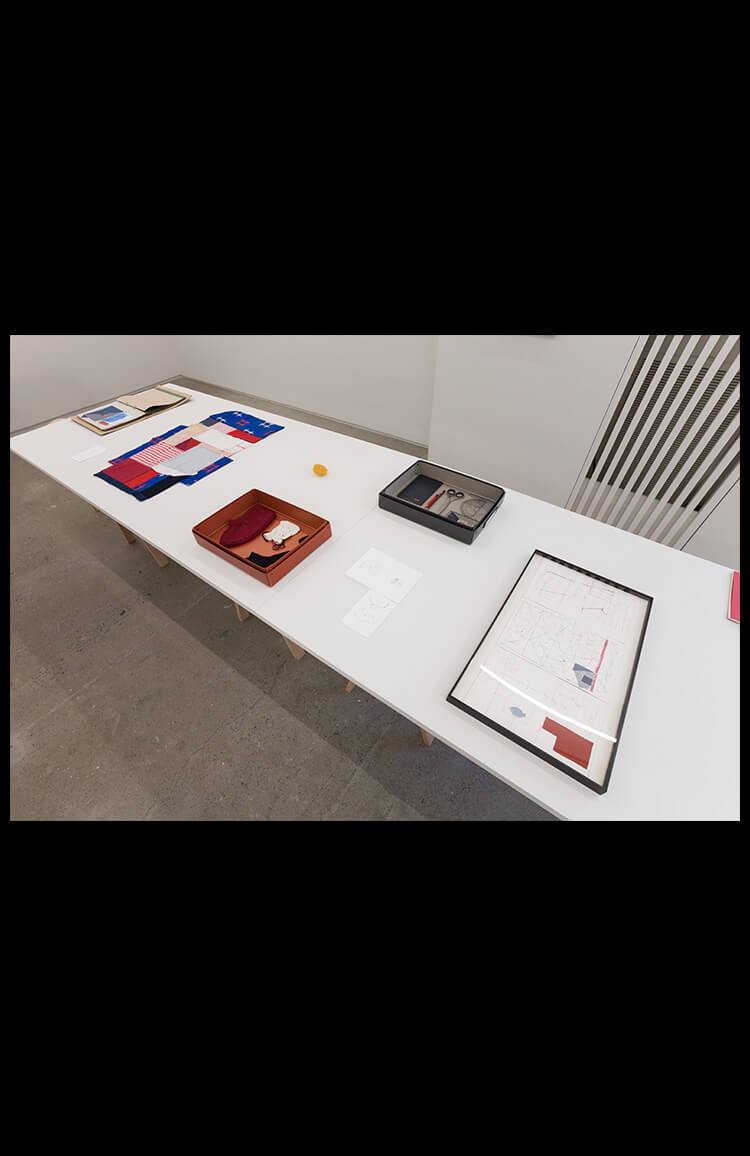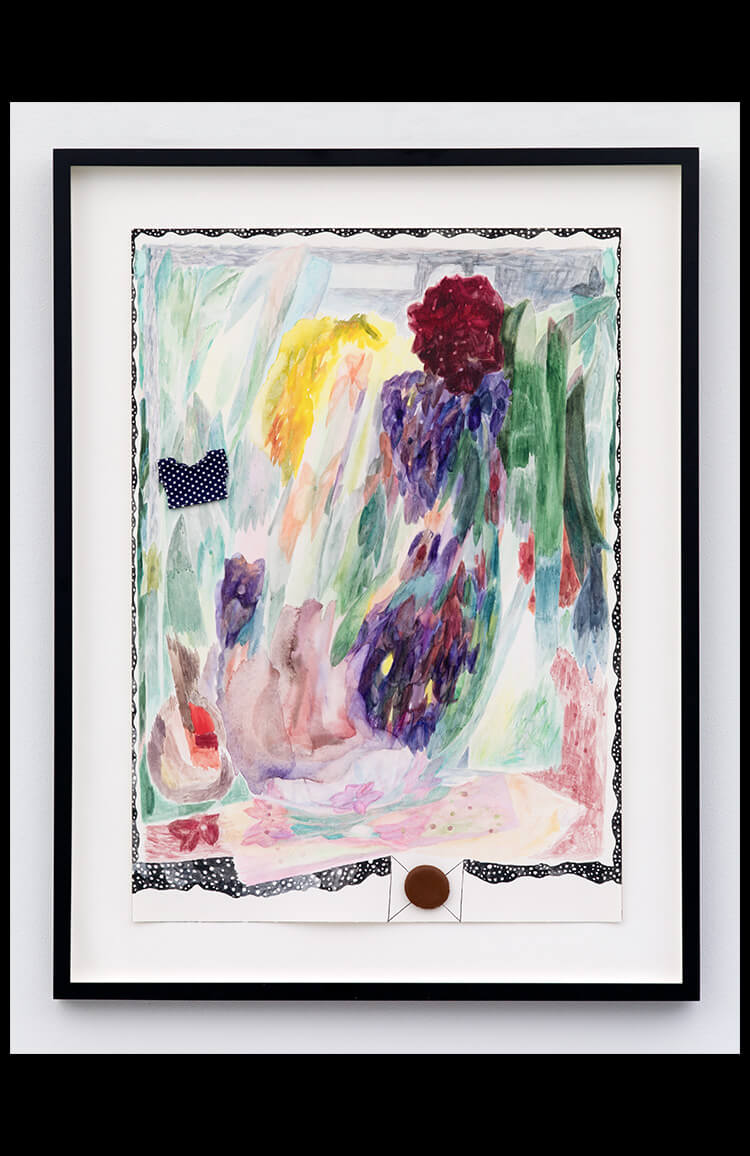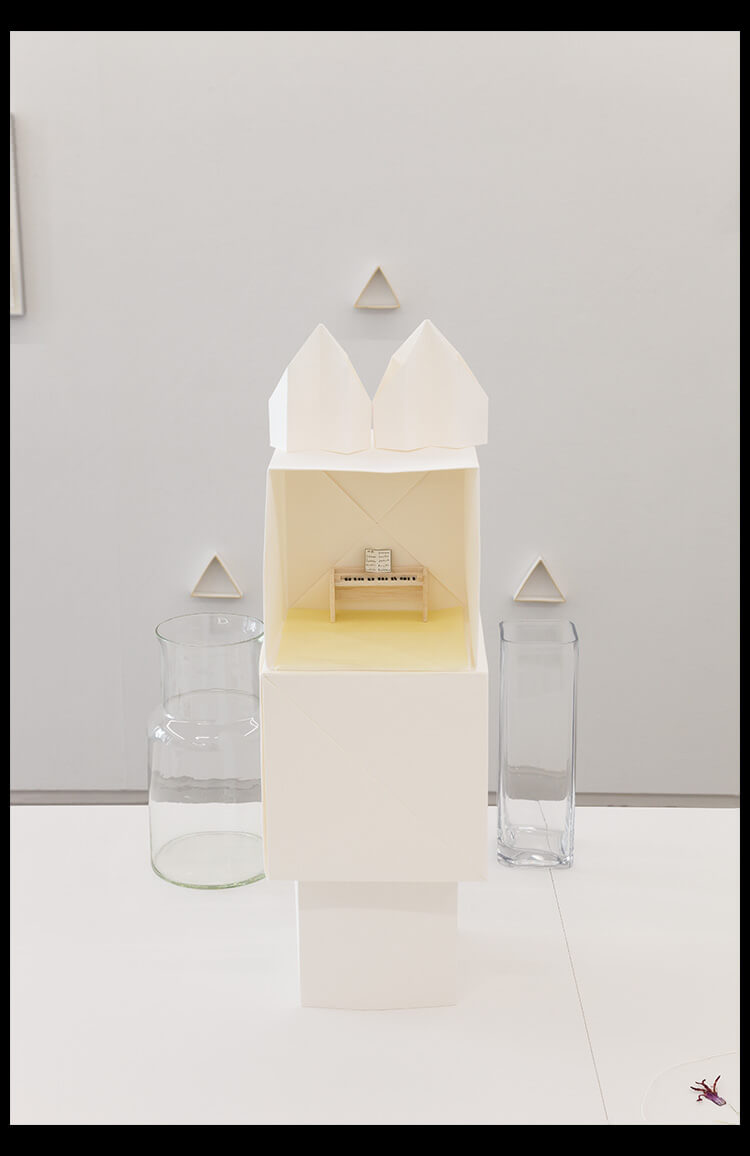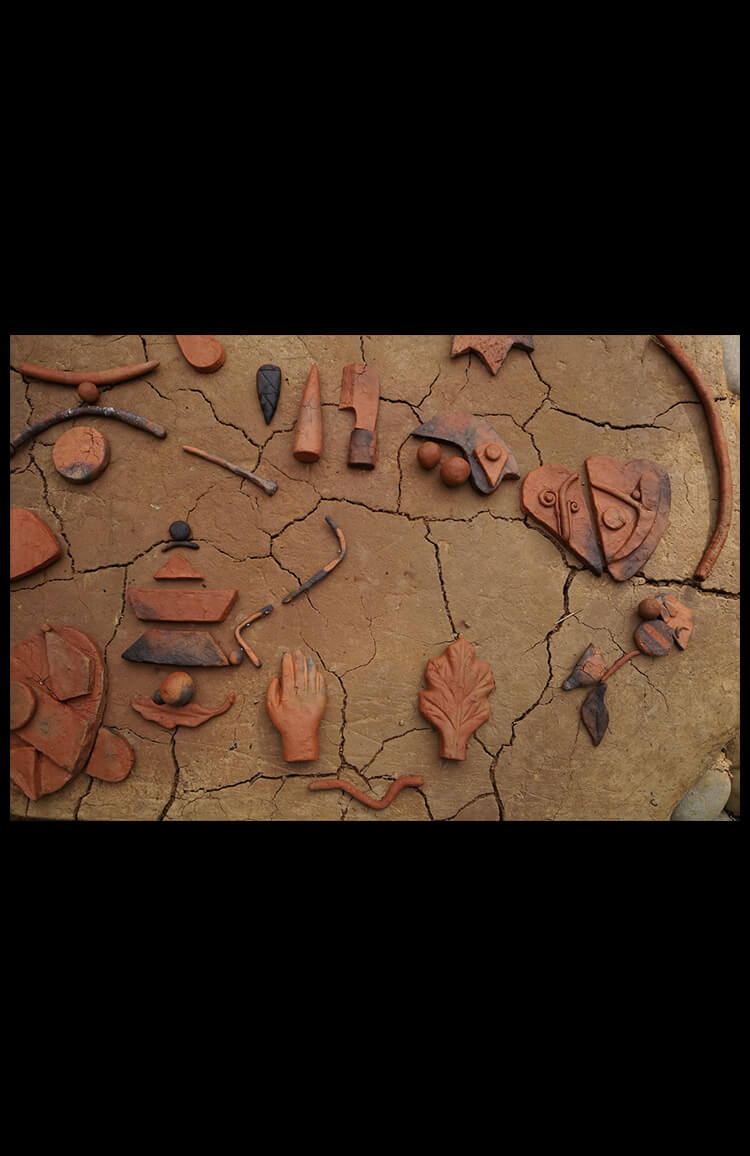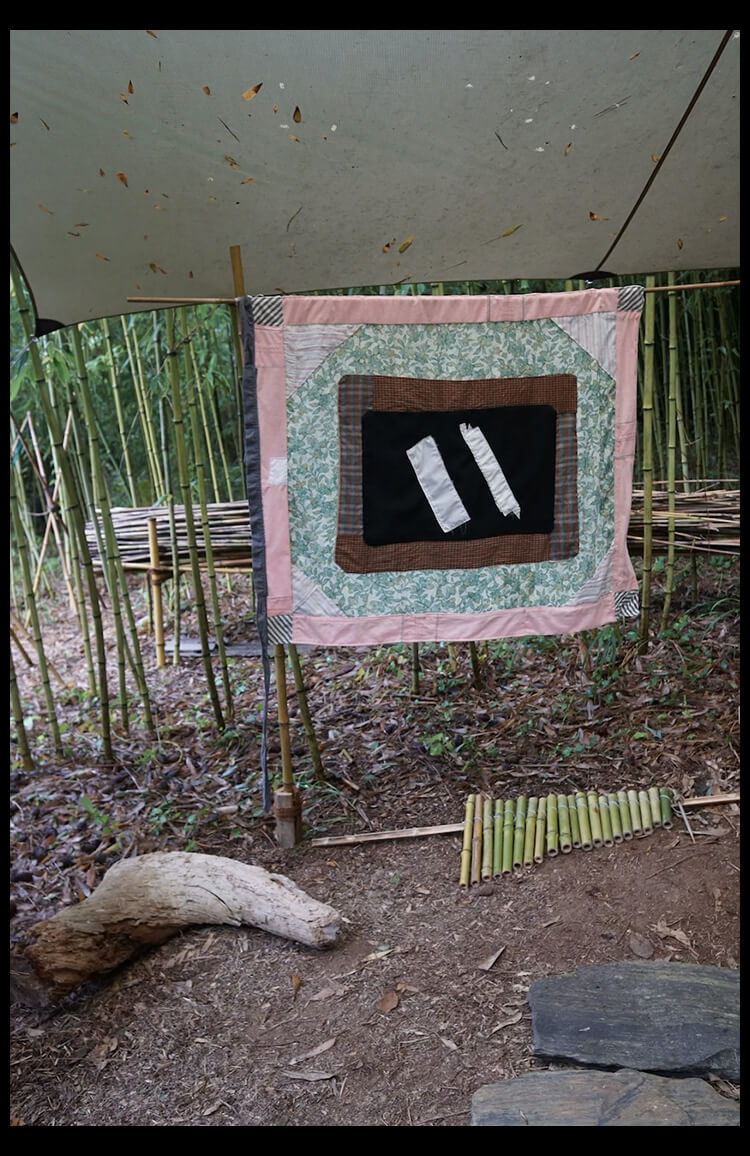IL__The reason you started paying more attention to colours was because you began perceiving things in a more painterly way; colours could also form figures, right?
RA__In the first place, I didn’t notice that there were colours at all. I realised that I couldn’t see them. I also couldn’t notice the inside of the outlines at all, and then gradually started to see them.
IL__Certainly, I have an impression of your work being in black and white in the early stages of your practice. Was the time you started making the patchwork works when you realized colours?
RA__Yes, that's after I started to see colours. Clothes and cloth are colourful, so I tried to use them as if they were paints.
IL__Maybe your interest was focused on other things before that.
RA__I was more interested in how images are, but I realised that there is a space existing after I actually experienced exhibiting my work - there is a space where I can make installations with my drawings. From there, I realised that there is also colour. Colour is something that really comes out of the space, and little drawings are something that goes into the paper. I started to feel that there was something that could respond to space after making installations, and that's probably how I developed my interest in colour.
ZI__She made books too.
RA__A tiny book. A book is a bit like drawing; getting inside the image.
ZI__You mean a book is like a world that doesn't depend on physical space, for example, in a picture book it doesn’t matter whether there is space or not once the character has appeared. A book doesn’t need to be hung on the wall, and the space that connects yourself and the image inside the book is kind of obstacle. But if you actually place a book as it is, its outlines and other elements could be the materials for the composition of the space.
RA__Maybe so. But there are elements in the book that are similar to installations, and maybe I like it because I can show several drawings in a row.
IL__You've also made clay works, haven't you? I remember seeing them in your exhibition at the Watari-um*1.
RA__Yes, I have made clay works, but I am someone who perceives things in a very flat way, so the clay works ended up resembling reliefs. However, it's interesting that the clay bulges. I find that the way I draw on clay with my fingers is very similar to drawing with conte. The drawings on the wall should be the same as the reliefs, but I feel that just by having a bump and a dip, I become aware that there is space. But in my case, the linear element is so strong that it doesn't become three-dimensional; it becomes a relief.
IL__I see, you have a tendency to perceive objects in a linear way.
RA__I think it's my habit, but I want to get rid of it somehow - not to see my drawings in just one way, and that would be a great pleasure if I could discover a new way of seeing; I want to see things that are not what my head thinks by making work.
Although I try not to, my habit would affect my thinking and I would see things with an assumption. This may be an inevitable function of a smooth life as a human being, but I think it can also be a negative effect. Drawing is like an exercise to get rid of these habits.
IL__I would like to ask you about the relationship between your work and your daily life. When I saw your work*2 about tidying up before, it reflected the actions you take in your daily life, such as tidying up and getting ready, and it made me think about what the act of creation is. Do you have a sense of where your work begins and ends?
RA__Yeah, I kind of have that mindset, like if it crosses the line, it becomes a work of art, but at the same time I keep things that belong on both sides of the line connected. I find it very interesting that at some point, something that wasn't categorized as a 'thing' crosses the line and somehow works. It doesn't happen with everything, but... sometimes it does. If you ask me what it is, it's hard to say.
IL__Does that happen during the process of making work?
RA__It’s like my drawings stand up independently.
ZI__It's like when you're cooking a curry or something and you realize you don’t have enough salt, so you add random seasonings, and somehow it ends up being a tasty curry, right?
RA__I think that even when people are making curry, they are simultaneously doing something like thinking other than making curry, and it's as if these different aspects from the purpose at hand appear in the form of a shape.
IL__I see. When you were explaining a work in which there is a box within a box previously, you said something like ‘you can't tell which is the inside and which is the outside’. Do you have such strange moments, for example?
RA__I often find myself in situations where I don't know which side I'm on when I'm doing something. I think I'm probably not very good at being organised.
ZI__But you like to be organised.
RA__Yes, I actually do. *Laughs* I’m really particular about it. But I don’t think I’m good at organizing. When I start drawing, my head is kind of messed up, like I’m in the process of drawing…For example, I draw a square shape, and there is an inside, but if I draw a line in another place, then it will become outside. Then I end up not knowing which is inside and outside and try to sort it out, then I get lost and repeatedly try to organize... Even if I decide this drawer is the right place to put in once, I second-guess myself that maybe it’s not the right place.
IL__That seems endless…
RA__When I'm doing something like that, I get to the moment where I can sort of organise it! I feel like I'm usually exposed to a lot of visual noise, but when I'm drawing I feel like I can sort out the noise, like it's disappearing.
IL__Like pause for a moment, and think about it?
RA__Yes, like it stops for a moment so I can see it. And then I think about things like organising, cooking, other problems in my daily life, and even bigger events in the world and link them to what is happening in my drawings; I can maintain my daily life by making work. For me, making is a way of dealing with difficult problems.
Perhaps the moment when my personal everyday awareness is somehow connected to the world outside myself, and that somewhere comes into focus, is when I feel that my work is ready.
IL__As well as drawings, you also make animations. I have seen your animation work of some watercolour drawings before, like stop-motion animation. What were you thinking when you made the animation?
RA__When I'm drawing, I have the feeling that I'm watching the different processes of making it at the same time. There is only one image that you can see on the finished drawing, but I find it very interesting to be able to see the many images in the process.
ZI__I thought you didn't like to do dealing with anything too moving, like animation.
RA__If I don't decide on the work process to get things moving, it's quite hard to do that kind of thing. So it's more like I'm doing it to overcome something I'm not good at. If I see a process that I know, I'm impatient and try to move on to the next one right away. If there is a movement that turns a round shape into a triangle, if I know that it will turn into a triangle, I will go against it.
That's why I didn't think I was suited to the kind of work where you have to decide on a process and then move on to the next step. But recently, when I tried it with paint, it was a bit less of a stress because I felt like I was watching the paint moving. I think it's probably a habit of mine to think about what's going to happen next, but I'm trying to think of ways to not do that and enjoy it all the time instead.
IL__If you can see what's coming next or how it's going to complete, does it mean it's not good work or even a failure?
RA__I don't want to limit my ideas, even though I can see what's going to happen next, and it makes me feel like I have to be patient until I actually see it. I don't want to just put out the vision in my head, I want to be surprised to see what I've made.
What I'm thinking in my head is obvious to myself, and I find that very boring. So I want something that doesn't come from my own ideas. But I don't want to rely completely on the outside of my head, it's more like I'm drawing it out of myself and interacting with the outside.
The outside is not something that can come out of nowhere, but it could be art materials, space or things I see in everyday life. It's like I work on them, they react and then I push them and do it again and again.

